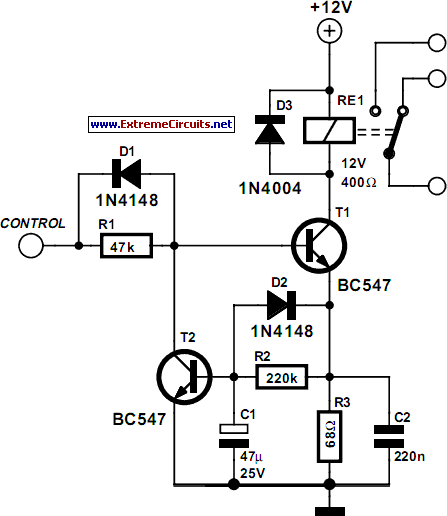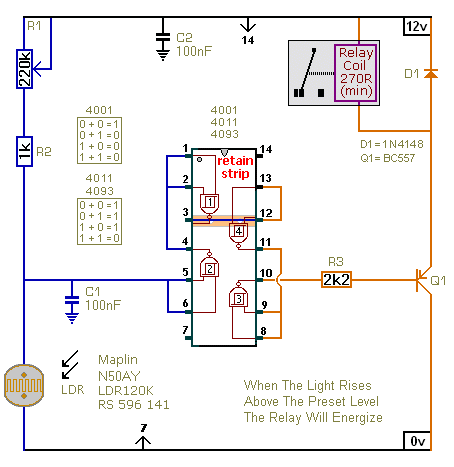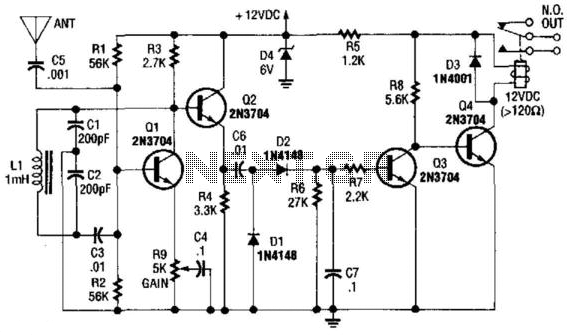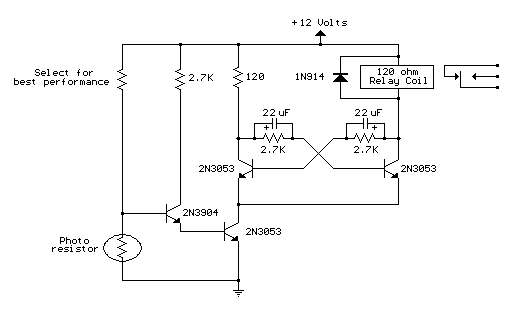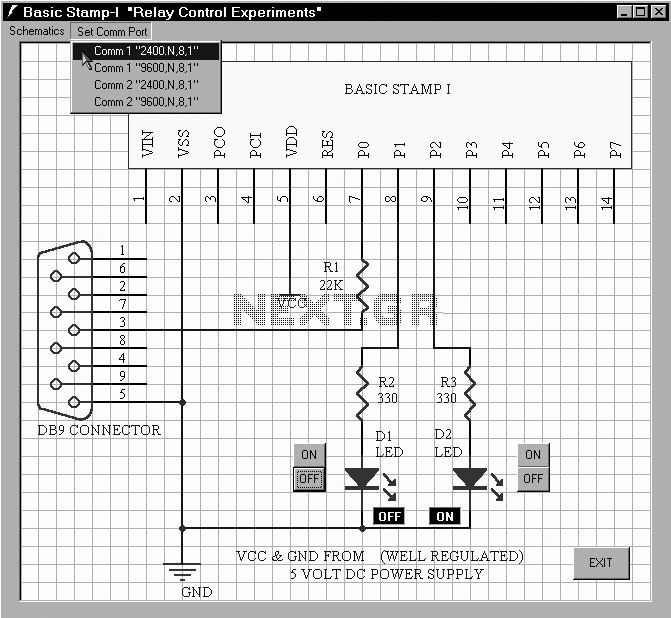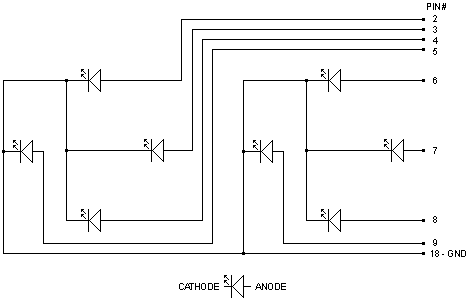
Coil Winding machine counter with Atmega8 and Reed relay
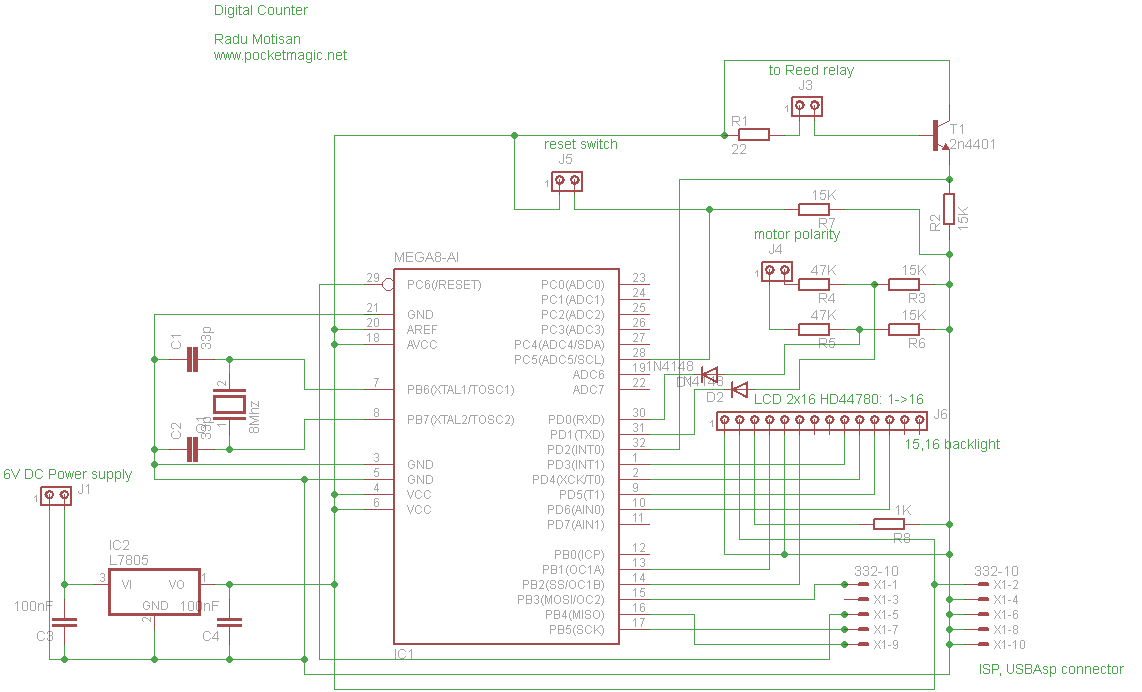
The circuit utilizes an Atmega8-8PU microcontroller configured for 8MHz operation with an external crystal oscillator. It incorporates a Nokia 5110 LCD and a transistor to manage the pulses generated by a reed relay. A 3.3V voltage regulator supplies power to the entire circuit. All components are assembled on a test board, which includes headers for an ISP programmer (USBAsp), the Nokia 5110 LCD, a 5V power supply (input to the 3.3V regulator), the reed relay connector, a reset button connector, and an additional two-pin connector designed to detect the polarity of a coil winding machine's motor. This polarity detection informs whether to increment or decrement a counter. J4 serves as the polarity connector and must be connected in parallel to the coil winding machine's motor. The design accommodates a 12V motor, with the option to modify the voltage using voltage dividers formed by resistors R3-R4 and R5-R6, ensuring the output does not exceed 5V. When the motor is connected with normal polarity, PD0 will register a high signal; conversely, if the motor is connected in inverse polarity, PD1 will register high. This polarity information is utilized in the programming logic to determine whether to increment or decrement the counter.
The circuit design features a microcontroller at its core, the Atmega8-8PU, which operates at an 8MHz frequency facilitated by an external crystal oscillator. This microcontroller interfaces with a Nokia 5110 LCD, providing a user interface for displaying relevant information, such as the counter value and motor status. The transistor, connected to the reed relay, functions as a switch that allows the microcontroller to read the state of the relay, which is crucial for the operation of the system.
Power management is handled by a 3.3V voltage regulator, which ensures that all components receive stable and appropriate voltage levels. The regulator is fed by a 5V power supply, which is a common voltage level for many electronic components. The test board is designed for easy connection and troubleshooting, featuring headers for programming and component connections, ensuring that the system can be easily modified or updated.
The polarity detection mechanism is critical for the functionality of the counter. The two-pin connector (J4) is strategically connected in parallel to the coil winding machine's motor, allowing the circuit to monitor the motor's polarity. The voltage dividers formed by resistors R3-R4 and R5-R6 play a vital role in adjusting the input voltage to a safe level for the microcontroller, preventing damage while ensuring accurate readings.
In normal operation, when the motor is connected with the correct polarity, the microcontroller detects a high signal on PD0, indicating that the counter should increment. Conversely, if the motor is reversed, resulting in a high signal on PD1, the counter will decrement. This feedback mechanism is essential for maintaining accurate counts in applications such as coil winding, where precise control over the number of turns is necessary.
Overall, this circuit design merges various components and functionalities to create a robust solution for monitoring and controlling a coil winding machine, ensuring both user interaction through the LCD and precise motor control through polarity detection.Using an Atmega8-8PU (configured for 8MHz with external crystal), a Nokia 5110 lcd, and a transistor to handle the pulses from a reed relay. A 3. 3V regulator provides the voltage for the entire circuit. Everything has been mounted on a test board, including the headers for: ISP programmer ( USBAsp ), the 5110 Nokia LCD, the power supply (5V in, fed to the 3.
3V regulator), the Reed relay connector, the reset button connector and another 2 pins connector, used to read the polarity of coil winding machine`s motor, so we know we either increment or decrement the counter. J4: is the polarity connector. It must be connected in parallel on the coil winding machine`s motor. It was designed for a 12V motor (but this can be changed by adjusting the voltage dividers formed by R3-R4 and R5-R6, so they take in the motor voltage, and output not more than 5V).
If the motor is connected in normal polarity, we will read PD0 high, if the motor is in inverse polarity, we`ll have PD1 high. This info is used in the code to either increment or decrement the counter. 🔗 External reference
The circuit design features a microcontroller at its core, the Atmega8-8PU, which operates at an 8MHz frequency facilitated by an external crystal oscillator. This microcontroller interfaces with a Nokia 5110 LCD, providing a user interface for displaying relevant information, such as the counter value and motor status. The transistor, connected to the reed relay, functions as a switch that allows the microcontroller to read the state of the relay, which is crucial for the operation of the system.
Power management is handled by a 3.3V voltage regulator, which ensures that all components receive stable and appropriate voltage levels. The regulator is fed by a 5V power supply, which is a common voltage level for many electronic components. The test board is designed for easy connection and troubleshooting, featuring headers for programming and component connections, ensuring that the system can be easily modified or updated.
The polarity detection mechanism is critical for the functionality of the counter. The two-pin connector (J4) is strategically connected in parallel to the coil winding machine's motor, allowing the circuit to monitor the motor's polarity. The voltage dividers formed by resistors R3-R4 and R5-R6 play a vital role in adjusting the input voltage to a safe level for the microcontroller, preventing damage while ensuring accurate readings.
In normal operation, when the motor is connected with the correct polarity, the microcontroller detects a high signal on PD0, indicating that the counter should increment. Conversely, if the motor is reversed, resulting in a high signal on PD1, the counter will decrement. This feedback mechanism is essential for maintaining accurate counts in applications such as coil winding, where precise control over the number of turns is necessary.
Overall, this circuit design merges various components and functionalities to create a robust solution for monitoring and controlling a coil winding machine, ensuring both user interaction through the LCD and precise motor control through polarity detection.Using an Atmega8-8PU (configured for 8MHz with external crystal), a Nokia 5110 lcd, and a transistor to handle the pulses from a reed relay. A 3. 3V regulator provides the voltage for the entire circuit. Everything has been mounted on a test board, including the headers for: ISP programmer ( USBAsp ), the 5110 Nokia LCD, the power supply (5V in, fed to the 3.
3V regulator), the Reed relay connector, the reset button connector and another 2 pins connector, used to read the polarity of coil winding machine`s motor, so we know we either increment or decrement the counter. J4: is the polarity connector. It must be connected in parallel on the coil winding machine`s motor. It was designed for a 12V motor (but this can be changed by adjusting the voltage dividers formed by R3-R4 and R5-R6, so they take in the motor voltage, and output not more than 5V).
If the motor is connected in normal polarity, we will read PD0 high, if the motor is in inverse polarity, we`ll have PD1 high. This info is used in the code to either increment or decrement the counter. 🔗 External reference
